The Montreal Canadiens decided to retool using a draft and develop plan that started with the 2018 NHL Draft. That weekend, general manager (GM) Marc Bergevin provided assistant GM Trevor Timmins with 11 draft picks to begin refilling the prospect pool. In the last three drafts, Timmins has acquitted himself well enough to receive high praise in turning a barren cupboard into one that is expected to bear fruit in the near future.
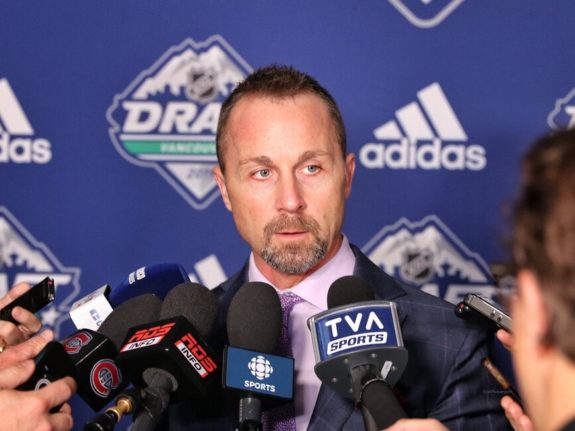
They have the best prospect pool of any team in Canada and I will make the argument they have the best in the NHL.
Craig Button – TSN Analyst
Under the Gun
The Habs have 49 players under contract, the NHL limit is 50. Looking ahead, this could be an issue. The deadline to sign CHL prospects drafted from the 2018 Draft is June 1, 2020, which means Bergevin will need to offload several contracts before then to create the space he needs to bring in prospects who have an NHL upside.
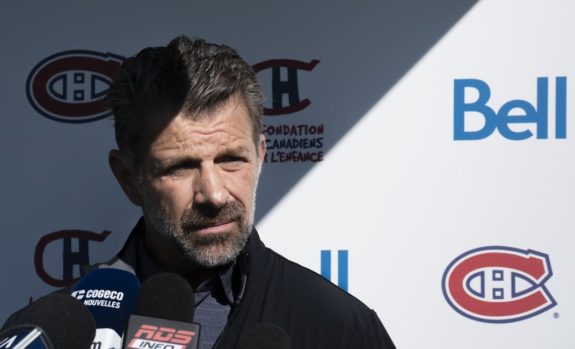
Adding these top prospects next season will also help the American Hockey League’s Laval Rocket build on their playoff aspirations. The Canadiens, likely sellers at the deadline, will make it simpler to create that contract space if they offload some pending unrestricted free agents (UFA).
Making the Cut
The Canadiens needed forward depth and scoring and their 2018 Draft was focused on that, as nine of the 11 picks were forwards. Of these, three must be signed by June 1 or they will re-enter the draft. They are: Cam Hillis, Allan McShane and Samuel Houde, and all three have demonstrated enough talent to earn an entry-level contract (ELC) offer.
Cam Hillis
Hillis, a right-shot center, was a 2018 third-round pick for the Canadiens. He is a mature player who displays a strong work ethic on and off the ice. His style of play is similar to Nick Suzuki’s in that he can make an excellent pass, but is willing to go anywhere, including the dirty areas, to create a scoring chance or finish a play.
His weakness, when drafted, was his defensive game, but he focused on it and he is now defensively sound. Part of the issue stemmed from his skating ability. He has improved his edge work and first step to take advantage of his ability to read plays as they develop, arriving in time to break up a pass or create back pressure, something he was unable to do last season.
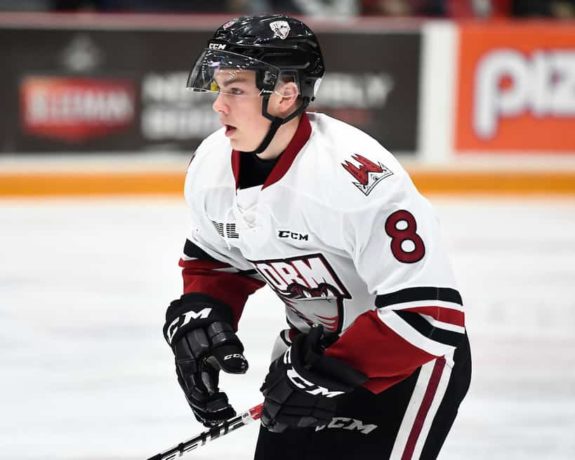
Hillis is the top line center for the Guelph Storm. However, with the Canadiens’ newfound depth at center, he will have to move to the wing if he is going to make the jump to the professional ranks and have a chance at playing in a top-six role.
With his lunch pail attitude and 200-foot game, he would develop well under Laval head coach Joel Bouchard, who adores players like Hillis who are willing to put in the work and earn their ice time.
Allan McShane
The 5-foot-11, 190-pound, left-handed center was the 2018 fourth-round pick by the Canadiens. McShane is a proven point-producer at the OHL level, with a 0.97 point-per-game (P/G) rate. He is also a proven playoff performer, on a 0.93 P/G pace with the Oshawa Generals in his last playoff run.
His skating needs work, as his first step still lacks the explosiveness to create separation. That being said, his skill is to create offensive opportunities. He uses his edge work to open lanes, allowing him to shoot or dish off to his linemates, ideal for a pass-first player. He is capable of this along the wing as well. Since Oshawa brought in Philip Tomasino in a trade, they have used McShane on his wing to create an explosive top line. Despite his faceoff abilities, playing on the wing will be McShane’s ticket to a professional career.
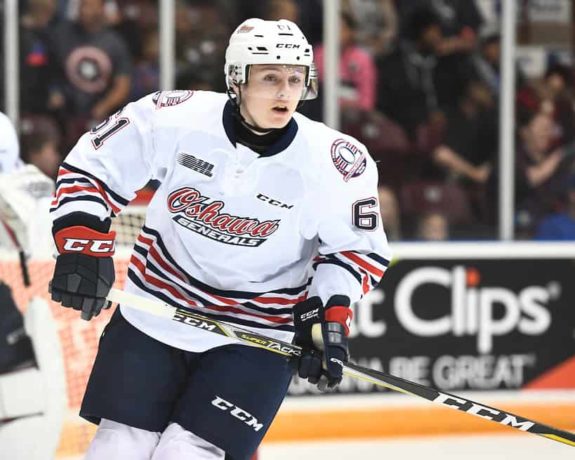
His shot has always been his second weapon. He has a quick release and is adept at scoring in close. However, his one-timer and slap shot could use some improvement. He is also capable of playing a grinding cycle game, something that will benefit him playing on bottom-six lines at the higher levels.
Defensively, he demonstrates a very mature style which will allow him to gain Bouchard’s confidence quickly; he is a reliable defensive player.
Samuel Houde
Houde, a 6-foot, 170-pound, left-handed center, was a fifth-round selection in 2018 at 133rd overall. His evolution as an all-around 200-foot center may turn him into a late-round gem for Timmins.
Currently, he is the Chicoutimi Saguenees’ top center alongside fellow Canadiens’ draft pick Rafael Harvey-Pinard. He’s the defensive conscience of the line and has found consistency in his offensive game with a quick release and accurate shot, as well as good vision and passing abilities. But to continue to progress in the professional ranks, he is another center who will need to shift to the wing due to organizational depth at the position.
He’s a character player who has a workman attitude at the rink, an attribute that seems to be one of the foundational qualities the Canadiens look for, and one that Bouchard appreciates in his players. Adding a local Quebec-born player to the Laval lineup will be a boost, as it’s always nice to hear about a local kid making the team.
Time to Develop
While none of the names mentioned here are expected to become anything more than a third-line player at best, it is vital for any contender to develop inexpensive depth players who can fill in during injuries.
Adding so many new faces to the professional ranks poses problems for development and what role each individual player will fill and how they can help the AHL team improve. Some may be able to make the jump and work their way into the lineup. Even though it is a development league, the goal is still to win and provide a competitive atmosphere.
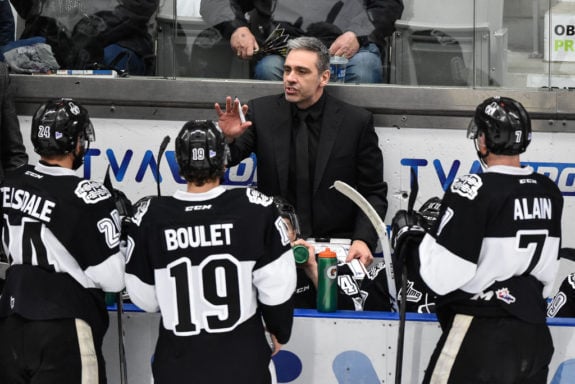
Once this new wave of prospects arrive in Laval, they are likely to battle with veterans to fill middle six roles with the Rocket. These three prospects are only the beginning of a tsunami of prospects that will battle for these jobs. Roles that will take them one to two seasons to become effective enough to be deemed NHL ready. Habs fans get to watch the future depth arrive in Laval, beginning with Hillis, McShane and Houde.